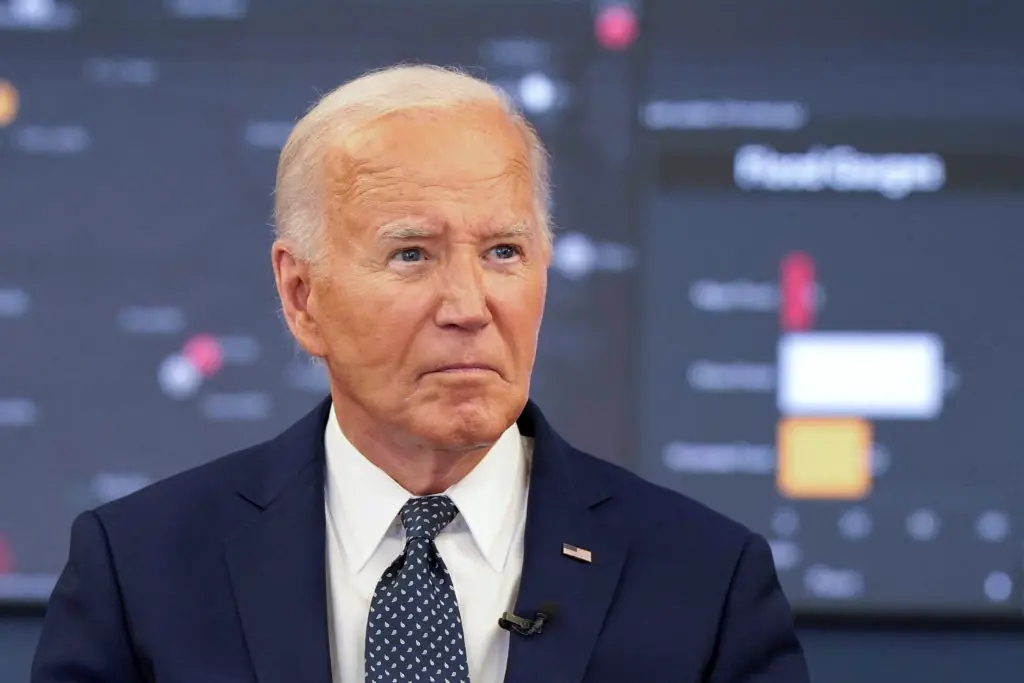
On Monday, two separate federal rulings delivered significant blows to landmark policies of the outgoing Biden administration. In Texas, U.S. District Judge Matthew Kacsmaryk vacated the Centers for Medicare & Medicaid Services’ (CMS) proposed minimum staffing requirements for nursing homes—the first federal mandate of its kind. Meanwhile, the U.S. Supreme Court granted former President Donald Trump’s emergency request to lift a lower court injunction blocking the administration’s use of the 1798 Alien Enemies Act to deport certain Venezuelan nationals, including alleged members of the Tren de Aragua gang.
Collectively, these decisions underscore the complex interplay between executive authority, regulatory reach, and judicial oversight. Nursing home operators and conservative policymakers hailed the rulings as victories for the rule of law and federalism, while labor unions, elder-care advocates, and immigration-rights groups decried the setbacks as threats to vulnerable populations and longstanding legal protections.
In this in-depth analysis, we examine:
-
The CMS Staffing Rule: Origins, provisions, and objectives of the Biden administration’s first federal nursing home staffing minimums
-
Litigation and Judge Kacsmaryk’s Ruling: Legal arguments, statutory authority, and the rationale for vacating the rule
-
Implications for Long-Term Care: Workforce challenges, quality-of-care considerations, and the future of federal oversight
-
The Alien Enemies Act Decision: Historical background, case chronology, and the Supreme Court’s 5–4 order lifting the injunction
-
Legal and Policy Consequences: Executive power in immigration enforcement, checks and balances, and potential diplomatic ramifications
-
Reactions from Stakeholders: Statements from industry groups, advocacy organizations, and key policymakers
-
Looking Ahead: Prospects for regulatory reform, pending litigation, and the broader impact on public policy
Part I: Nursing Home Staffing Minimums—From Rulemaking to Reversal
1. Origins and Objectives of the CMS Staffing Rule
1.1 Long-Standing Concerns in Long-Term Care
For decades, policymakers, regulators, and patient advocates have highlighted persistent challenges in the nation’s long-term care system: inconsistent staffing levels, variable infection-control practices, and uneven quality metrics across facilities. The COVID-19 pandemic’s devastating toll on nursing home residents—who accounted for a disproportionate share of U.S. fatalities in 2020 and 2021—further exposed vulnerabilities linked to chronic understaffing and lapses in safety protocols.
1.2 CMS’s Regulatory Authority
Under the Social Security Act, CMS oversees Medicare and Medicaid certification requirements for skilled nursing facilities (SNFs) and nursing homes. The agency has routinely promulgated regulations governing patient rights, infection control, and staffing documentation. However, it had never before imposed explicit federal minimums for nurse-to-resident ratios or mandatory on-site registered-nurse presence.
1.3 Key Provisions of the Proposed Rule
On April 17, 2024, CMS published a final rule in the Federal Register that, beginning in 2026, would require every Medicare- and Medicaid-certified nursing home to:
-
Maintain at least one registered nurse (RN) on-site 24 hours a day, seven days a week.
-
Ensure that each resident receives a minimum of 0.55 hours (33 minutes) of direct RN care per day, on average.
Rural and small facilities were granted an additional 12 months—up to 2027—to achieve these thresholds. CMS projected that the rule would improve resident outcomes, reduce hospital readmissions, and strengthen infection-prevention practices.
2. Legal Challenge and Industry Opposition
2.1 Lawsuit by Nursing Home Operators
Hours after the rule’s publication, the American Health Care Association (AHCA) and the National Center for Assisted Living (NCAL)—which represent the vast majority of U.S. nursing homes—filed suit in the Northern District of Texas. Key arguments included:
-
Exceeding Statutory Authority: CMS lacked explicit congressional authorization to impose binding minimum staffing requirements.
-
Unrealistic Compliance Burden: Given the nationwide shortage of qualified RNs, many facilities would be unable to meet the proposed thresholds without drastic cost increases or closures—particularly in rural markets.
-
Inadequate Cost–Benefit Analysis: The rule’s estimated annual cost of $5.4 billion did not sufficiently weigh the risk of service disruptions or displacement of vulnerable seniors.
2.2 The Workforce Shortage Context
According to the U.S. Bureau of Labor Statistics, the healthcare sector faced a shortfall of over 200,000 RNs in 2023, driven by retirements, burnout, and uneven geographic distribution. Rural nursing homes already struggled to recruit and retain licensed nurses; some facilities reported vacancy rates exceeding 20 percent. These workforce constraints informed operator concerns that the new rule would force closures or reduce access to care during an ongoing demographic wave of aging Baby Boomers.
3. Judge Kacsmaryk’s Decision
3.1 Findings of Law and Fact
On Monday, May 6, 2025, U.S. District Judge Matthew J. Kacsmaryk—appointed by President Trump in 2019—issued a 47-page memorandum opinion vacating the CMS staffing rule in its entirety. His ruling included the following determinations:
-
Statutory Exceedance: While acknowledging CMS’s broad mandate to protect beneficiary health and safety, Kacsmaryk concluded that Congress had not delegated authority to set absolute staffing minimums. Prior staffing requirements concerned documentation, assessments, and competency verification—not quantitative ratio mandates.
-
Arbitrary and Capricious: Under the Administrative Procedure Act (APA), agencies must demonstrate a rational connection between the facts and policy choices. Kacsmaryk held that CMS failed to adequately justify why 0.55 hours per resident per day was the necessary threshold, nor did it consider alternative solutions such as targeted funding for workforce development.
-
Unrealistic Implementation: Recognizing the pandemic-era staffing crisis, the court found that CMS underestimated the rule’s disruptive potential. The projected compliance costs could “force numerous facilities—especially in underserved areas—to close, displacing residents and undermining access to care.”
3.2 Vacatur vs. Remand
Rather than remanding the rule for further consideration or revision, Judge Kacsmaryk vacated it outright, meaning the staffing requirements would have no legal effect. His opinion urged Congress to address long-term care workforce shortages through legislation rather than regulatory fiat.
4. Reactions and Ramifications
4.1 Industry and Political Responses
-
AHCA/NCAL: Clif Porter, CEO of AHCA/NCAL, praised the ruling as a “victory for the rule of law” that “protects access to care for our aging population.” He warned that forced compliance would have “closed nursing homes and displaced vulnerable seniors.”
-
Labor Unions and Advocates: The Service Employees International Union (SEIU) and the Long-Term Care Community Coalition decried the decision. SEIU President Mary Kay Henry argued that “strong federal standards are essential to ensure safe staffing and quality care for residents”—calling on the Biden administration to appeal.
-
CMS Statement: CMS issued a brief statement indicating that it was reviewing the court’s decision and considering legal options. An appeal to the Fifth Circuit Court of Appeals appears likely, setting up a protracted judicial review over the agency’s rulemaking authority.
4.2 Policy Implications
-
Presidential Transition: With a new administration set to take office in January 2025, the future of the staffing rule may hinge on the priorities of incoming leadership and the composition of Congress.
-
Workforce Solutions: Stakeholders emphasize the need for robust federal and state collaboration on nurse education grants, loan-forgiveness programs, and immigration-based pathways to attract foreign-educated nurses.
-
Regulatory Strategy: The ruling signals a judicial willingness to clamp down on expansive regulatory interpretation, potentially influencing future CMS and health-related rulemaking under any administration.
Part II: The Alien Enemies Act and the Supreme Court’s 5–4 Order
5. Historical Background of the Alien Enemies Act
5.1 Origins in 1798
The Alien Enemies Act (Title 50 U.S.C. § 21) was enacted amid the Quasi-War between the United States and France. It authorizes the President to detain, deport, or restrict movement of male nationals (aged 14 and older) of a country with which the U.S. is at war. The statute saw rare use:
-
War of 1812: Detention of British nationals.
-
World War I: Alien monitoring and internment of German nationals.
-
World War II: Internment of individuals from Axis nations, albeit mostly handled under separate executive orders.
Prior to the 2024 controversy, the Act lay dormant for over 70 years.
5.2 Reinvigorated Use in 2024
In early 2024, the Trump administration invoked the Alien Enemies Act to target Venezuelan nationals implicated in transnational criminal organizations. Specifically, the Department of Homeland Security (DHS) moved to classify members of the Tren de Aragua gang—alleged to engage in human trafficking, extortion, and violent crimes—as alien enemies subject to immediate removal without standard immigration-court proceedings.
6. Lower-Court Challenge and Stay
6.1 District Court Injunction
A coalition of civil-rights groups, including the American Civil Liberties Union (ACLU) and several immigrant-rights coalitions, sued to enjoin DHS from using the 1798 statute for summary deportations. In March 2025, U.S. District Judge Tanya S. Chutkan (D.D.C.) granted a preliminary injunction. She held that:
-
Due Process Concerns: The Act’s summary-removal provisions circumvented established immigration adjudication processes, violating constitutional and statutory due process guarantees.
-
Statutory Interpretation: Congress did not intend the Alien Enemies Act to replace the Immigration and Nationality Act’s removal framework for noncitizens on U.S. soil.
DHS subsequently paused enforcement against several dozen designated individuals, pending further judicial review.
7. Supreme Court’s Emergency 5–4 Order
7.1 The Application to Vacate the Stay
The Justice Department—on behalf of DHS and the White House—filed an emergency application to the Supreme Court, seeking to lift the district court’s injunction. In a surprising turn, the Court granted the application in a 5–4 decision on May 6, 2025, allowing immediate deportations to resume under the Alien Enemies Act. Justice Clarence Thomas, joined by Chief Justice John Roberts and Justices Samuel Alito, Neil Gorsuch, and Brett Kavanaugh, constituted the majority.
7.2 Majority Rationale
The majority’s terse order provided limited explanation, indicating that the lower court’s injunction “unduly restricts the President’s authority under the Alien Enemies Act” and “impedes critical national security and foreign policy objectives.” The decision reinstated executive discretion to remove designated alien-enemy nationals without further judicial interference, at least pending appellate review.
7.3 Dissenting Views
Justices Elena Kagan and Sonia Sotomayor—joined by Justices Ketanji Brown Jackson and Merrick Garland—dissented vigorously, warning that:
-
Separation of Powers: The Court’s action undermined Congress’s comprehensive immigration-removal framework and expanded executive authority beyond any meaningful statutory constraints.
-
Due Process Protections: Individuals subject to the Act were being denied fundamental rights to contest removal in immigration courts.
-
Historical Usage: The original wartime context of the Alien Enemies Act did not anticipate its application to peacetime enforcement against noncombatant criminal suspects.
Part III: Broader Legal and Policy Implications
8. Executive Power and Immigration Enforcement
8.1 Scope of the Alien Enemies Act
The Supreme Court’s order signals a robust view of executive power in national-security domains, potentially opening the door for future administrations to apply the Alien Enemies Act against nationals from adversarial nations. Critics worry this precedent blurs lines between criminal and wartime detention authority.
8.2 Intersection with INA Procedures
The Immigration and Nationality Act (INA) provides a detailed framework for removal proceedings, including opportunities for asylum, bond hearings, and appeals. The Court’s ruling allows bypassing these safeguards for designated alien enemies, raising questions about equitable treatment and judicial oversight.
9. Diplomatic and Humanitarian Concerns
9.1 International Norms
Rapid deportations under the Act could strain relations with countries like Venezuela, where returnees may face retribution or persecution. Under the Convention Against Torture and customary international law, the U.S. is generally barred from removing individuals to countries where they risk torture or death—yet the Act contains no express exception.
9.2 Human-Rights Advocacy
Immigrant-rights organizations contend that summary removals contravene the U.S. commitment to human rights. They anticipate immediate appeals to the Fifth Circuit and likely renewed challenges aimed at safeguarding due-process and nonrefoulement obligations.
Part IV: Stakeholder Reactions
10. Nursing Home Ruling
-
American Health Care Association (AHCA): “Today’s decision protects access to critical long-term care services and upholds the proper balance between federal authority and industry realities,” said CEO Clif Porter.
-
Service Employees International Union (SEIU): “The court has robbed residents of the staffing protections they desperately need,” responded SEIU President Mary Kay Henry, calling for an urgent appeal.
-
CMS Leadership: Administrator Chiquita Brooks-LaSure issued a statement affirming CMS’s commitment to “ensuring safe, high-quality care” and announcing plans to review “all legal options.”
11. Alien Enemies Act Decision
-
Department of Homeland Security: Secretary Kristi Noem lauded the ruling as “vital to protect Americans from dangerous terrorist elements hiding among us.”
-
Department of Justice: Attorney General Pam Bondi praised the “landmark victory for executive authority,” pledging continued legal defense.
-
Civil Rights Coalition: ACLU Executive Director Deborah Vagins vowed to challenge the order, asserting that “no administration should have unchecked power to deport people without due process.”
Conclusion and Outlook
Monday’s twin rulings reflect the current judiciary’s assertive stance on regulatory limits and executive discretion. Judge Kacsmaryk’s vacatur of the CMS nursing home staffing rule underscores judicial scrutiny of agency overreach under the APA and highlights the critical need for comprehensive legislative solutions to workforce shortages. Simultaneously, the Supreme Court’s decision to revive the Biden administration’s use of the Alien Enemies Act illustrates broad deference to presidential authority in matters of national security—albeit at the potential cost of due-process and humanitarian protections.
Both developments will likely face prolonged appellate battles. In the nursing home context, CMS may seek relief from the Fifth Circuit and, if necessary, the Supreme Court—while Congress considers targeted workforce legislation. In immigration, the Fifth and D.C. Circuits could weigh in on the procedural consonance of the Alien Enemies Act with overarching immigration statutes and constitutional safeguards.
As the new presidential administration assumes office, these cases will set significant precedents. Lawmakers, regulators, and advocates on all sides will closely monitor how courts define the boundaries of federal authority—shaping the contours of healthcare policy, immigration enforcement, and the broader American social contract for years to come.





